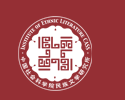Hlude wæran hy, la, hlude, ða hy ofer þone hlæw ridan,
wæran anmode, ða hy ofer land ridan.Scyld ðu ðe nu, þu ðysne nið genesan mote.
[Loud were they, lo, loud when they rode over the hill,
Were of one mind when they rode over the land.
Shield yourself now, so that you may survive this attack.]
The lines above serve as the beginning of an incantation embedded in an Old English charm against a sudden pain (“Wið Færstice”); however, with its alliterative verse form (common to all genres of Old English verse) and its motifs of battle and camaraderie, this text could just as easily be imagined as occurring within an epic. This paper seeks to understand such interconnectedness across diverse genres in terms of sustainability.
As John Miles Foley observed, oral traditional poems do not exist in a vacuum. Rather, “oral poems inhabit an ecology of verbal art. Neither poems nor performances nor genres can be isolated without doing violence to that ecology, without changing them into something they aren’t” (How to Read an Oral Poem, 189). Thus it would seem that the sustainability of oral epic often depends in large part on its interdependence with other traditional genres. While also drawing upon outside traditions such as that surrounding South Slavic charms, I will explore in this paper the relationship of Old English healing charms to the heroic epic tradition, drawing examples especially from Beowulf and metrical incantations embedded within twelve Old English remedies.
Anglo-Saxon poetry is deeply infused with a powerful ethos of heroic battle, indicative of strong parallels between oral epic verse and Germanic conceptions of disease and healing. Victorious heroes and noble weaponry are frequently recurring themes in Old English healing charms. The charm“Wið Færstice,” cited above,goes on to provide extended images of knives being forged, arrows and spears being exchanged across battle lines. A charm against a swarm of bees addresses the bees as “victory-women,” evocative of the Valkyries of Germanic legend. And the poem known as the “Nine Herbs Charm” requires the practitioner to speak to herbs directly and by name, calling upon them to remember their past deeds of glory just as Beowulf opens with reminders of the Danes’ glory in days gone by.
Even those remedies that do not explicitly invoke images of warfare nonetheless establish illness and disease as enemies to be conquered. Virtually all of the remedies in surviving manuscripts establish an agonistic relationship between healer and ailment, the remedy—and by implication, its practitioner—pitted directly against the problem to be alleviated. At a very fundamental level,then, a healer is also a hero.Such connections have very deep roots. Approaching the issue from the perspective of comparative linguistics, Calvert Watkins has convincingly demonstrated a shared poetics linking genres as diverse as myth, epic, and charms in Germanic culture and across Indo-European linguistic traditions. Noting the prominent role of the “poet as healer,” he illustrates the “interplay between poetic form—in the deployment of formulaic utterances—and the pragmatic function which the poet is called on to control” (How to Kill a Dragon: Aspects of Indo-European Poetics, 540).
This type of interconnectness is far from limited to Indo-European contexts. In such world epics as Gesarand Son-Jara, the delicate balance between healing and heroism is even more explicit and profound. In myriad oral traditions, as Foley has shown, “various genres annex diction and narrative patterns that seem to attach principally to no single genre, but are shared at the level of the larger poetic tradition” (“How Genres Leak in Traditional Verse,” in Unlocking the Word Hoard, ed. Amodio and O’Brien O’Keeffe, 76-108).
In Old English poetry, as in other oral and oral-derived traditions, oral epic exists only in the sustaining environment of the wider tradition. By understanding and embracing the natural diversity of traditional verbal art as essential to a healthy and vibrant “ecology,” we are in a much better position to understand aspects of sustainability with regard to oral epic.
